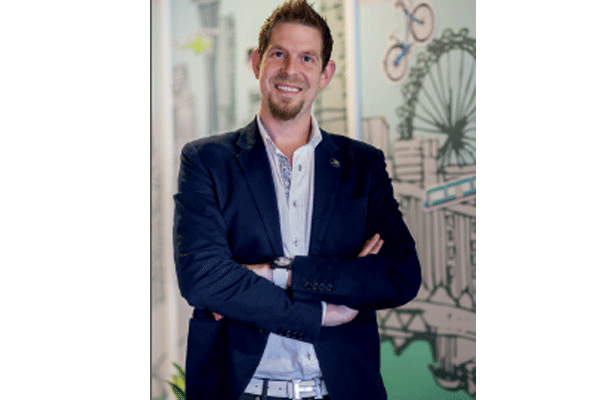Arthur Chapin, SVP of Global Product and Design, Expedia.


Arthur Chapin, SVP of Global Product and Design, Expedia.

Your title is SVP of Global Product and Design. So what does that job cover?
It’s sort of the intersection of designing, building and selling.
From a design standpoint we have a team of about 100 designers that have several different disciplines, so we have the research discipline, and then we have visual designers, interaction designers and creative designers.
That gives us a pretty broad team that does everything from determining the layout of the pages, to what’s on the pages and drives a lot of the standards on how the Expedia brand looks and feels.
Was there a day when you realized that design could play an important part in the product?
I think from day one. It comes back to my love of motorcycles.
Motorcycles are design, right? And what I like about motorcycles is that they’re such a pure sort of form.
It’s functional beauty, and I believe in that concept for websites or any consumer product.
Design needs to make sure you move forward both in the functionality and in accomplishing the mission, but doing it in a way that is seamless and easy.
Was there day when a major or minor design decision really impacted Expedia’s business?
Oh, every day. We find that often the most impactful tests we run are very design-related tests. Design can be the difference between a successful and an unsuccessful product.
Let’s use a simple example. If we create a new feature that requires clicking on a button, and we don’t design and validate through research that it’s discoverable, the feature may fail. Not because the feature’s bad. The feature may fail because it wasn’t used, because it wasn’t discovered. So we find, all the time, that small design changes can have big impacts in the performance or use of a specific product.
It sounds like you’re a big believer in testing design.
Yeah, that’s right. We want to validate and make sure that the designs we choose are designs that work for our customers. Design is a complex art and science. So there’re many different things that need to be taken into account when you’re looking at visual beauty, usability and interaction beauty — functional beauty, essentially.
So what’s the design testing process like at Expedia?
I’m going to give you three different types of testing we do, and this is by no means inclusive. So the first is what we call ethnographic research.
And it’s understanding the problems that our customers face when trying to travel and then looking for ways to solve them.
Then you have specific types of validation of products or concepts, and that’s when we’ll start to use some of these features like eye tracking. That’s the second kind of testing that we do.
The third kind of testing that we do is actually testing on our website, and we like to think about it as letting our customers vote for the best experience they’d like to have. So we try and test every single change that we put out, and we do it throughout the product design process.























